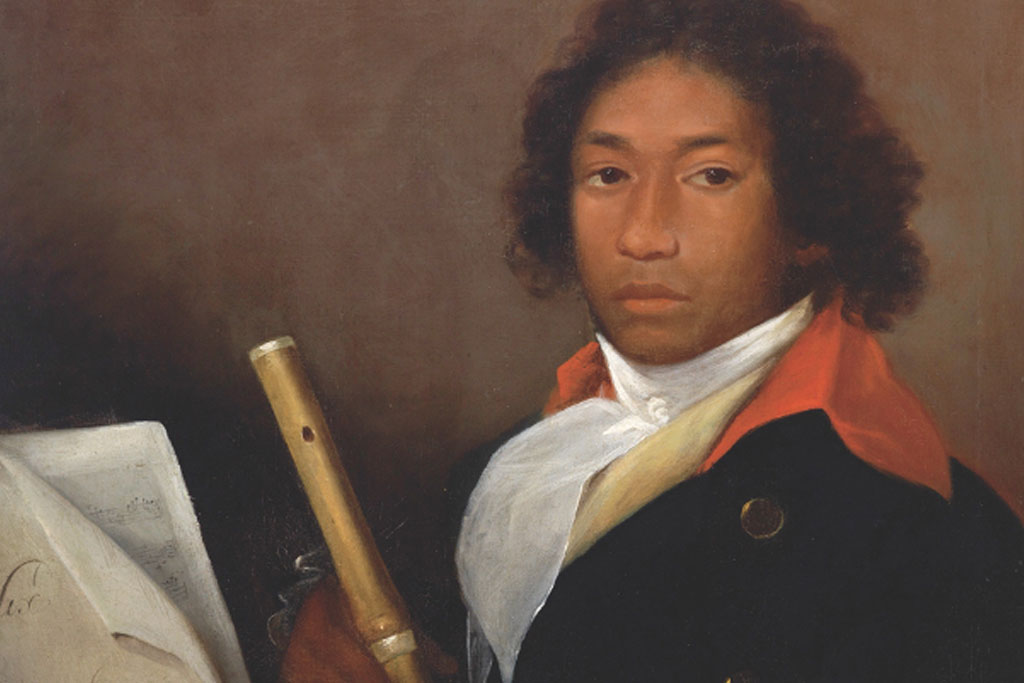Barzillai Lew was born on November 5, 1743 in Groton, Massachusetts, to Primus and Margret Lew, both former servants who gained their freedom prior to their marriage in 1742. Thus, Barzillai, their oldest son, was born a free Black man.
With the death of his mother in 1752, Lew’s father remarried and bought a farm located in the Pepperell section of Groton, on the west side of the Nashua River. This part of Groton became known as Primus Hill, and the nearby Fitchburg Railroad Branch Line depot as Primus Station.
Primus had served as a musician and fifer in the French and Indian War and like his father, Barzillai enlisted as a fifer in Captain Thomas Farrington’s Company from Groton, marching north to Canada in 1760. Zeal, as he was called, was “big and strong with an extraordinary talent as a musician.”
In the mid-1760s, home from the war, Lew sold the family farm and moved to nearby Chelmsford, Massachusetts, where he worked as a cooper making barrels. In 1766 he paid Major Abraham Blood the sum of 400 pounds for the freedom of Dinah Bowman of Lexington, Massachusetts, whom he married shortly thereafter.
But Lew’s skills were again needed with the start of the American Revolution. On May 6, 1775, less than a month after the conflict at the North Bridge on April 19, he enlisted in Captain John Ford’s Company, in Colonel Ebenezer Bridge’s 27th Regiment, Chelmsford, as a soldier, fifer, and drummer. His military record described him as “a cooper by trade, and quite dark colored, a large man, six feet tall.” Lew was one of many African American soldiers who took part in the Battle of Bunker Hill on June 17, 1775. Keeping the morale high amidst the bloody battle, Lew played “There’s Nothing Makes the British Run Like Yankee Doodle Dandy” on his fife, furthering his musical reputation.
Lew returned home to Chelmsford and in September 1777, joined Capt. Joseph Bradley Varnum’s militia from Dracut, Massachusetts, and marched to Fort Ticonderoga in New York. Varnum’s son John noted in his journal that “Zeal is selected for a fifer and fiddler for the grand appearance” at General Burgoyne’s surrender.
With money earned from Lew’s military service, the family acquired a tract of land on the North side of the Merrimack River in Dracut (now Lowell, Massachusetts). Relocating there, Dinah and Zeal built a house, raised their thirteen children and farmed on what was known as Zeal Road (now Totman Road).
Lew and Dinah, herself an accomplished pianist, along with their children accompanied the Pawtucket Church and Society services. The family formed a band, and performed at events from Boston, Massachusetts to Portland, Maine. Active members of the church and staunch abolitionists, their church organized the first anti-slavery meeting in the Greater Lowell area. Their house would become a stop on the Underground Railroad.
Barzillai died at age 78 on January 18, 1822, and was buried in the Clay Pit Cemetery in Lowell. This free-born black man’s fifing gained distinction in the American Revolution and began a family tradition of service to America.
It is a fitting tribute that “The Flutist”, a painting believed to be a portrait of Barzillai Lew, hangs in the Walter Thurston Gentleman’s Reception Room of the US State Department building, bearing witness to one of America’s early patriots.
Painting: A Flutist (ca. 1785–1810). Portrait believed to be Barzillai Lew, attributed to Gilbert Stuart, but unsubstantiated. Permanent Collection US Department of State, Washington, D.C.

